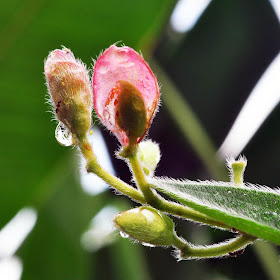Olive-backed Sunbirds are frequently seen on my Lantana camara shrubs. They are ingenious in the way they collect nectar from the flowers. Being small-bodied, light and possessing a long, narrow, curved beak helps.

This sunbird alights on a slender stalk ...

and insert its curved beak into a tiny flower.

It then flips up to approach a flower facing upwards.

See how its fine beak can be inserted into the teeny weeny florets.


These globular heads are left behind when all the flowers drop.



Lantana flowers non-stop and add dashes of colour to the garden where ever the seeds disperse and take root.

This variety has touches of pink.

In this variety of orange-yellow florets, the buds first appear pink.
























.jpg)
s.jpg)


















